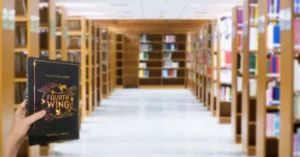Uncuymaza, an ancient and revered weaving technique from the Andean indigenous communities, represents an enduring form of storytelling and craftsmanship. Passed down through generations, this art form embodies both traditional values and modern evolution, resonating deeply within Andean cultural heritage. Characterized by intricate patterns, vibrant colors, and profound symbolic meanings, itserves as a bridge connecting past and present, as well as the people, nature, and divine forces of the Andean world.
History of Uncuymaza
Uncuymaza’s roots stretch back to the pre-Columbian era, where Andean societies used textiles not only as functional items but also as spiritual, social, and political symbols. In these early Andean civilizations, textiles were regarded as precious objects, often created to honor deities and symbolize status within the community. This emerged as a distinct art form that, unlike other crafts, incorporated complex patterns and color schemes with great spiritual and cultural depth.
The Craftsmanship of Uncuymaza
Creating Uncuymaza is a labor-intensive process that involves skillful techniques and profound cultural awareness. Using hand-spun natural fibers from alpacas, llamas, and sheep, artisans create the vibrant threads that are dyed using plant-based organic pigments. The weaving is done on a traditional back strap loom, requiring focus, dexterity, and a deep knowledge of the Andean cosmological symbols. Each piece of Uncuymaza embodies the ancient knowledge and beliefs that have been passed down through the generations.
Selecting and Preparing Materials
Artisans begin by gathering natural fibers and preparing them for the intricate weaving process. The use of natural dyes from local plants ensures that each Uncuymaza textile reflects the unique environment of the Andean region.
Dyeing with Organic Pigments
The dyeing process is both an art and a science. Plants, roots, and minerals are selected carefully to produce the characteristic vivid colors that are symbolic in Uncuymaza. For instance, red often represents the earth or life, while blue signifies the sky and the divine.
Weaving Techniques and Patterns
The weaving process requires a great degree of skill and understanding of Andean cosmology. Patterns are carefully chosen to represent elements like rivers, mountains, and animals significant in Andean mythology, transforming each piece into a narrative tapestry.
Cultural Significance of Uncuymaza
It transcends mere craftsmanship, embodying an art form rich in cultural and spiritual meaning. Each piece carries profound significance, with every color and motif thoughtfully chosen. These textiles often play a vital role in traditional ceremonies, serving as a bridge to connect with Andean deities, ancestors, and the natural world.
Storytelling Through Symbolism
Each Uncuymaza textile tells a story of the Andean landscape, its people, and their beliefs. Animal symbols like condors or llamas represent specific mythological elements, while geometric patterns evoke the Andean mountains and rivers, which are sacred in their cosmology.
A Ritual and Offering
Beyond being a form of expression, it is a form of devotion. Textiles are often used as offerings to the gods, establishing a link between the weavers, their community, and the divine. This tradition underscores the textile’s role as both a sacred object and a vessel for cultural identity.

The Modern Evolution
While it is rooted in ancient tradition, it has evolved to incorporate modern influences. Many weavers today blend traditional techniques with new motifs and materials to keep the craft relevant in a contemporary context. This evolution reflects the resilience of Andean culture and its ability to adapt without losing its essence.
Innovation and Tradition
Modern Uncuymaza artisans are innovating by merging traditional motifs with contemporary elements, responding to both global demand and the evolving Andean identity. This approach preserves the cultural integrity of Uncuymaza while allowing the craft to grow and remain economically viable for artisans.
Sustaining a Cultural Heritage
Through workshops and cultural preservation initiatives, efforts are underway to pass on the skills and knowledge of Uncuymaza to future generations. This ensures that Uncuymaza not only survives but thrives as an essential part of Andean heritage.
Conclusion
Uncuymaza remains a testament to the rich cultural heritage of the Andean people. It is a symbol of resilience, tradition, and spiritual devotion, and through its unique designs and symbolic motifs, it connects artisans with the land and their ancestors. Today, it continues to evolve, reflecting the dynamic nature of Andean culture and the enduring appeal of its artistry. As the art form adapts to the modern world, it serves as a vibrant reminder of the ancient wisdom embedded in Andean society.
FAQs
What is Uncuymaza?
This is a traditional Andean weaving technique known for its intricate patterns, vibrant colors, and cultural symbolism, often used in ceremonial and storytelling contexts.
What materials are used in Uncuymaza weaving?
Artisans use natural fibers such as sheep, llama, and alpaca wool, dyed with organic pigments from local plants, to create textiles.
What do the designs in Uncuymaza symbolize?
The designs often represent Andean cosmology, with geometric shapes symbolizing natural elements like rivers and mountains, and animals important to Andean mythology.
How has Uncuymaza evolved over time?
While maintaining traditional techniques, modern weavers incorporate new designs and materials, blending old and new to keep the craft relevant today.
Is Uncuymaza still used in rituals?
Yes, its textiles are frequently used in Andean rituals, symbolizing a connection between the community, the natural world, and the divine.
Where can one learn more about Uncuymaza?
Many Andean cultural centers, workshops, and exhibitions showcase Uncuymaza and provide insights into its history, techniques, and cultural importance.








